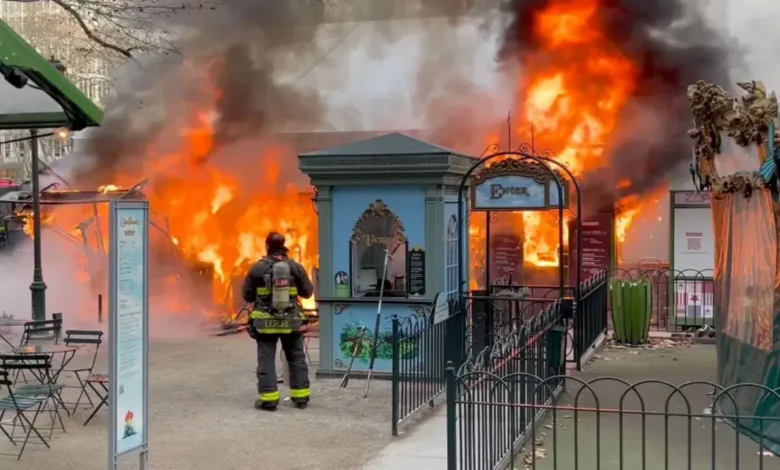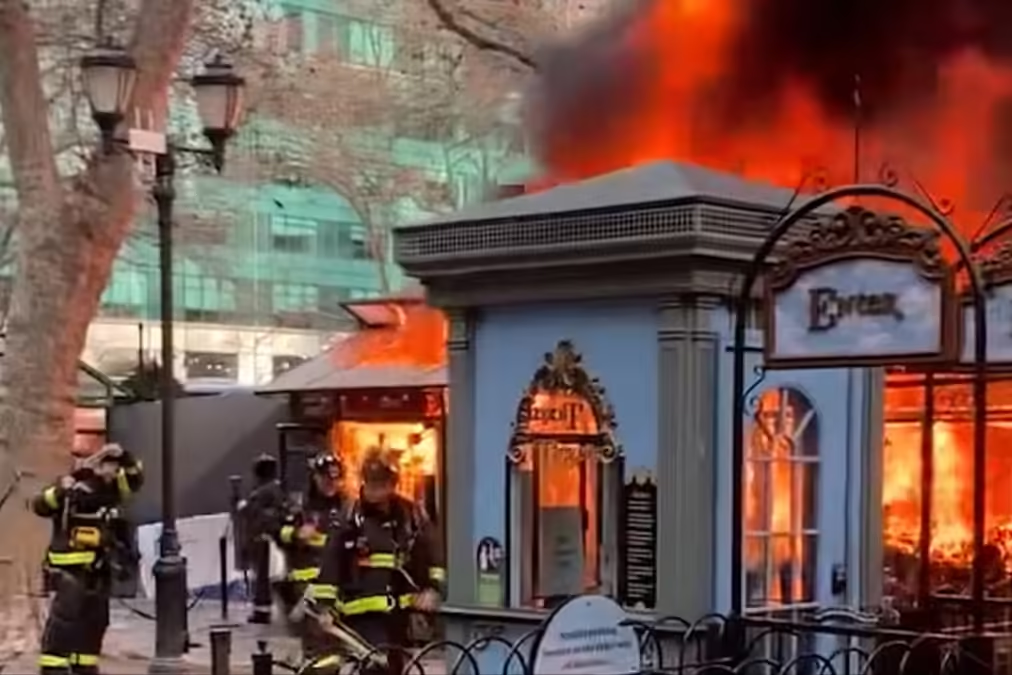Bryant Park Fire: A Turning Point in NYC’s Urban Safety

Bryant Park Fire: When you think of New York City’s iconic landmarks, Bryant Park might not be the first place that comes to mind for a tragedy, but its history has recently been marked by a fire that caused panic, and confusion, and ultimately led to significant changes in city-wide fire safety protocols. The Bryant Park fire stands as a poignant reminder of how something so serene can quickly become the site of danger. Let’s dive into the details of what happened, the impact of the fire, and the changes that followed.
The Unthinkable at Bryant Park
Bryant Park, nestled in the heart of Midtown Manhattan, is a popular destination for tourists, locals, and office workers alike. It’s known for its lush green space, outdoor cafes, and seasonal events. However, in a twist that shocked many, a fire broke out at Bryant Park one chilly evening, bringing with it a wave of fear and confusion.
The fire, which started unexpectedly, rapidly spread through parts of the park, sending people running for cover. In an area that’s typically known for its tranquility, the sudden chaos caught everyone off guard. The fire broke out in the early evening, just as people were beginning to gather to enjoy the park’s winter events, like ice skating and holiday markets.
The situation was exacerbated by the dense urban environment surrounding the park. The tall buildings, bustling streets, and crowded spaces made it difficult for emergency responders to reach the affected area in time to prevent panic from setting in. The city’s fire department was immediately dispatched, but the complexity of the area’s layout delayed their efforts to control the flames. As the fire raged, there was a growing sense of urgency, and a heavy cloud of smoke hung over the park.
Despite the confusion, there was no loss of life, and the fire was eventually extinguished after hours of strenuous work by firefighters. Still, the incident left an indelible mark on the city, raising questions about fire safety measures in such a heavily populated urban space.
How the Bryant Park Fire Started
Understanding how the Bryant Park fire started involves looking at a combination of factors. Though the cause was initially unclear, investigations revealed that the fire likely began as a result of faulty electrical wiring in one of the park’s event booths. Bryant Park is home to a variety of seasonal setups, and during the winter months, temporary structures are erected to host food vendors and shops. These structures rely heavily on electrical equipment for lighting, heating, and other functions. Unfortunately, a malfunction in the wiring caused a spark that ignited the dry materials around it, leading to the fire.
While the investigation pinpointed the electrical wiring as the primary cause, it’s important to acknowledge that the park’s seasonal infrastructure had not been sufficiently inspected in the weeks leading up to the incident. Many felt that a more thorough check might have caught the problem before it escalated into a full-blown fire. The issue was further compounded by the lack of proper fire safety measures around the temporary structures.
The situation could have been much worse, as Bryant Park is often crowded during the winter months. People pack into the park for activities like skating, attending holiday markets, and enjoying the festive atmosphere. Had the fire started later in the evening or during a busier time, the outcome could have been tragic.

Immediate Response to the Bryant Park Fire
Once the fire was discovered, the New York Fire Department (FDNY) quickly mobilized to respond. Given the location, resources were already stationed nearby, but the challenge was coordinating a quick response in such a busy and crowded area.
One of the biggest hurdles the FDNY faced was ensuring the safety of everyone in the park. At first, the fire seemed small and contained, but it quickly grew out of control, reaching nearby structures. Emergency responders worked tirelessly, using their extensive training and expertise to manage the blaze while also evacuating the park and the surrounding area.
The fire department’s swift action, however, was not without complications. Due to the limited access to certain areas within Bryant Park, fire trucks had difficulty positioning themselves. Streets surrounding the park were blocked off due to the sheer number of people trying to flee, and this created a bottleneck situation that hindered emergency efforts. However, with the park’s dense infrastructure and well-prepared responders, the fire was brought under control within hours.
Meanwhile, local police forces worked alongside fire crews to manage crowd control, which was no easy feat given the park’s popularity. As the fire spread, fear began to set in, and people scrambled to escape. Fortunately, there were no serious injuries, but the emotional toll on the community was significant.
The Aftermath: Community Response and Recovery
Once the fire was extinguished and the immediate danger passed, the real work began. For the residents and frequent visitors of Bryant Park, it was a shocking experience. Many couldn’t believe that something so catastrophic could happen in such a peaceful place. Community members came together to help in the aftermath, with numerous individuals offering their support to those impacted by the fire.
The recovery process was not just about rebuilding physical infrastructure, but also restoring a sense of safety and security in the community. Local organizations and businesses around the park worked hand-in-hand with city officials to restore Bryant Park to its former glory. Despite the damage to some of the park’s seasonal structures, the heart of the park remained intact. Bryant Park reopened to the public within a few days, with enhanced safety protocols in place to prevent a similar event from happening again.
Community members rallied together to provide emotional support for those who had been directly affected by the fire. The incident sparked conversations about fire safety, especially in public spaces with a high volume of visitors.
What Changed After the Bryant Park Fire?
In the wake of the Bryant Park fire, the city’s fire safety protocols underwent a dramatic overhaul. One of the key changes was the introduction of more stringent regulations for temporary structures in public spaces. The city government imposed new rules regarding the installation and inspection of electrical wiring and fire safety equipment for these types of structures.
Additionally, the fire department began working more closely with park officials and event organizers to ensure that fire safety was a priority during events, especially those that involved temporary structures or large crowds. It was clear that the existing safety protocols weren’t sufficient, and the fire served as a wake-up call to the need for more proactive measures.
One of the biggest changes was the increased frequency of fire safety checks for public spaces like Bryant Park. The city made it a point to ensure that any structure set up in public spaces, regardless of its temporary nature, was properly inspected by trained professionals before it was allowed to open to the public. This included a comprehensive look at the wiring, fire suppression systems, and emergency evacuation plans.
Beyond structural changes, the fire also brought to light the need for better training for first responders in high-density environments. The FDNY revisited its training programs to prepare for large-scale urban fires, taking into account the specific challenges posed by crowded public spaces.
The Legacy of the Bryant Park Fire
Though the fire at Bryant Park was a harrowing event, it ultimately became a turning point in urban safety for New York City. The incident spurred a series of changes in fire safety regulations and protocols that have undoubtedly made the city safer. The event also served as a reminder of how quickly a peaceful moment in the city could turn into an emergency.
Today, Bryant Park stands as both a symbol of resilience and an example of how public safety measures can evolve. While the fire may have disrupted the park’s peaceful ambiance in the short term, it also ensured that future visitors would benefit from a safer environment. The lessons learned from the Bryant Park fire were shared with other cities, making it an important case study in urban fire safety.






